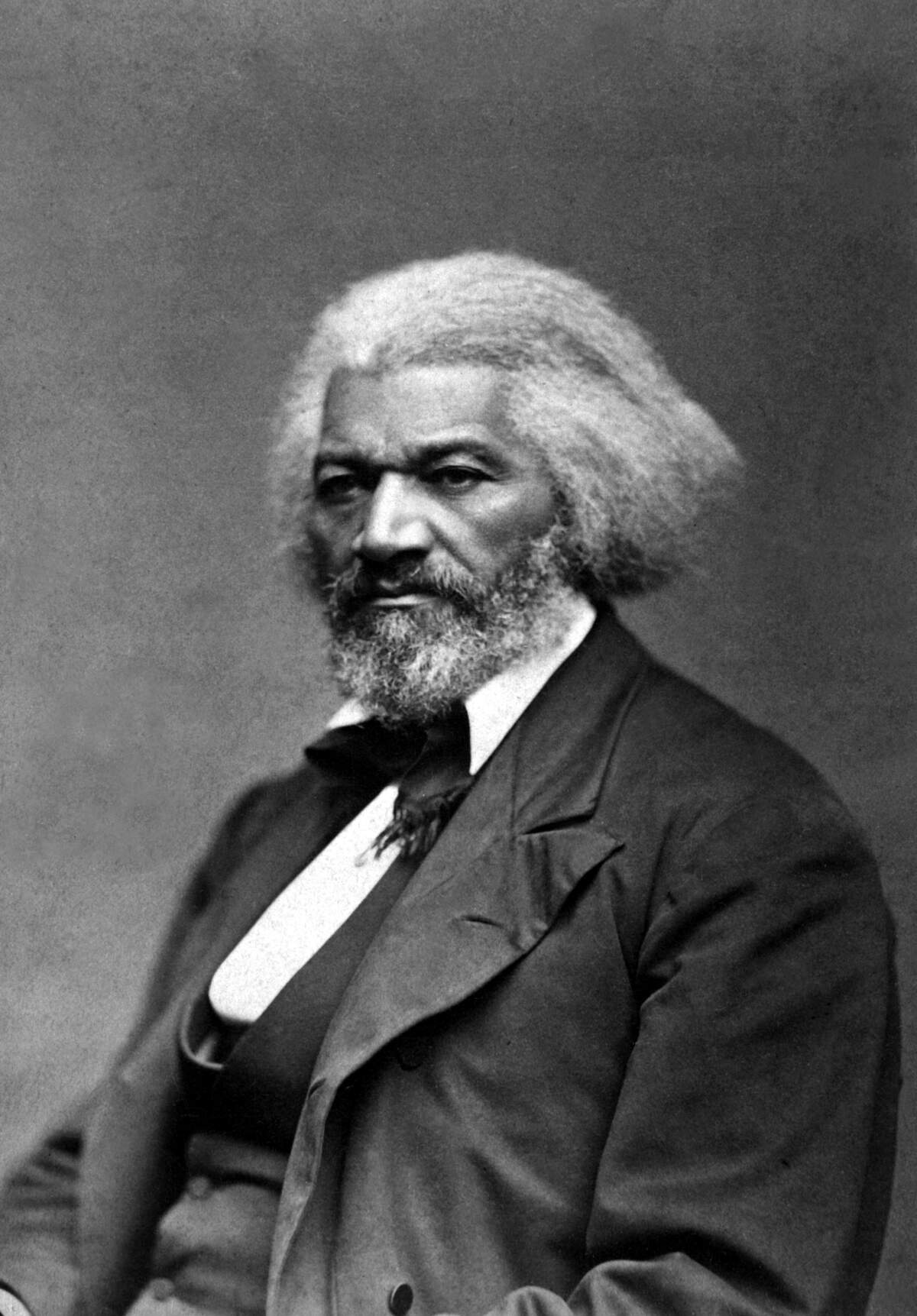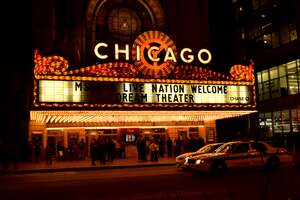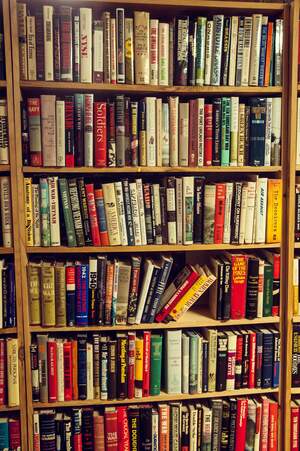

Frederick Douglass Day
Today we celebrate the life of Frederick Douglass, a nineteenth-century abolitionist, writer, and orator, who was one of the most prominent African American leaders of his time. It is believed that Douglass was born on today's date, in 1818, although his exact birthdate is not known. In 1926, Carter G. Woodson created "Negro History Week," choosing the second week of February because it encompassed the birthdays of Douglass and Abraham Lincoln. This eventually became Black History Month, and celebrations of Frederick Douglass Day stemmed from this.
Each year, an event with speeches, the laying of a wreath, and more, is held at the Frederick Douglass National Historic Site in Washington D.C., which is located at Cedar Hill, the home Douglass lived in during the last years of his life. In Massachusetts, the New Bedford Historical Society holds a Read-A-Thon, where Douglass' autobiographies are read aloud. These events don't always take place exactly on Frederick Douglass Day.
Frederick Douglass was born as Frederick Augustus Washington Bailey, in Talbot County, Maryland, near Easton, where his mother, Harriet Bailey, worked in the cornfields as a slave. Harriet was of African and Native American ancestry; Douglass' father was a white man. It is unknown who he was—he may have been Harriet's master.
Douglass was raised by his maternal grandmother until the age of six when he was taken to the Lloyd plantation, known as the Wye House plantation, where his siblings were. It was here that he became more acutely aware of the horrible conditions of slavery. In the following years, he was shuffled back and forth between Hugh and Sophia Auld in Baltimore, and Hugh's brother Thomas. While in Baltimore, he taught himself to read and write, which was illegal for slaves to do. It is believed that Sophia taught him the alphabet and that some white children also helped him learn.
While being hired out to work for William Freeland, Douglass used the Bible to teach other slaves how to read. Thomas Auld learned of Douglass' efforts to help educate other slaves and sent him to Edward Covey, a man known for his brutality toward slaves. During these years, Douglass learned more about abolitionists and began thinking more about freedom and attempting escape. He also met free blacks, including Anne Murray, to whom he became engaged in 1838.
In September 1838, Frederick Douglass escaped slavery. Dressed as a sailor, and in possession of a certificate he had received from a friend that said he was a free black man, he took a train to Havre de Grace, Maryland, and then traveled through Delaware and Pennsylvania before making it to New York City. There he was taken into the home of David Ruggles, a leader of the Underground Railroad. He stayed with him until Anne Murray could meet him.
Anne Murray and Frederick Douglass married and moved to New Bedford, Massachusetts, where Douglass worked as a day laborer. It was at this time that Frederick Bailey became Frederick Douglass, to help hide that he was a fugitive. The couple took their name from a Sir Walter Scott poem called "The Lady of the Lake" and they had five children together.
Douglass soon rose to be a prominent abolitionist, writer, and orator. With his intellect and many accomplishments, he turned the argument that slaves weren't as intelligent as their owners and thus should remain under them on its head. He got involved with the abolitionist movement when he met William Lloyd Garrison and became part of the American Anti-Slavery Society. With his firsthand accounts of slavery, he educated people on how bad it really was to live in bondage. Southern writers had often said that slaves had it easy and were happy, and Douglass' account undermined this.
Douglass wrote three autobiographies, as well as many other documents and letters. In 1845, he published Narrative of the Life of Frederick Douglass, an American Slave, which was an account of his time growing up as a slave in Maryland. In it he wrote, "From my earliest recollection, I date the entertainment of a deep conviction that slavery would not always be able to hold me within its foul embrace; and in the darkest hours of my career in slavery, this living word of faith and spirit of hope departed not from me, but remained like ministering angels to cheer me through the gloom."
About this time, he went to England and Ireland for two years, where he spoke against slavery and for women's rights, such as the right to vote. One important speech he gave, the "London Reception Speech," highlighted the contradictions of boasting of liberty and justice while denying it to millions of slaves. After coming back to America in 1847, Douglass began publishing a newspaper, The North Star. (It would become Frederick Douglass' Paper in 1851, and was published until 1860.) He also continued his work for women's rights and was the only African American present at the 1848 Seneca Falls Convention.
In 1852, he gave another one of his most famous speeches, known as the "What to a Slave is the 4th of July?" speech. In it, he said, "What, to the American slave, is your 4th of July? I answer: a day that reveals to him, more than all other days in the year, the gross injustice and cruelty to which he is the constant victim. To him, your celebration is a sham; your boasted liberty, an unholy license; your national greatness, swelling vanity; your sounds of rejoicing are empty and heartless; your denunciations of tyrants, brass fronted impudence; your shouts of liberty and equality, hollow mockery; your prayers and hymns, your sermons and thanksgivings, with all your religious parade, and solemnity, are, to him, mere bombast, fraud, deception, impiety, and hypocrisy — a thin veil to cover up crimes which would disgrace a nation of savages."
During the Civil War, Douglass met with Lincoln and helped organize the Massachusetts 54th and 55th black regiments. He was in favor of Lincoln early on but wanted the Emancipation Proclamation to be more forceful, and to give ex-slaves the right to vote, especially since many had fought for the Union Army. Although Douglass supported Radical Democracy candidate John C. Frémont in the 1864 election, Douglass and Lincoln later reconciled before Lincoln's death the following year. In 1876, Douglass spoke at the dedication of the Emancipation Memorial in Lincoln Park in Washington D.C. Afterwards, Mary Lincoln Todd gave Douglass Lincoln's favorite walking stick.
Following the Civil War, Douglass continued working for African American rights, like voting rights and other social and economic reforms. He also pushed for anti-lynching laws. He became US marshall of the District of Columbia, the District of Columbia recorder of deeds, and the minister of the Republic of Haiti. He continued to give speeches, giving one on the occasion of the 25th anniversary of the Emancipation Proclamation. In 1882, his wife Anna died, and in 1884 he married Helen Pitts. On February 20, 1895, Frederick Douglass died in Washington D.C. His contributions and importance to American history are profound, and it is apt that we would celebrate him today.
How to Observe Frederick Douglass Day
Celebrate the legacy of Frederick Douglass today:
- Visit the Frederick Douglass National Historic Site in Washington D.C. Events are held on or around today's date.
- Visit the New Bedford Historical Society, which is located in the Nathan and Polly Johnson House, where Frederick Douglass once lived. A Read-A-Thon and other events are held there each year. There is also a celebration there each September, marking the anniversary of when Frederick and Anna arrived in the city in 1838.
- Visit Douglass' grave in Mount Hope Cemetery, in Rochester, New York. You could also stop at the Frederick Douglass Monument in Rochester.
- Read Douglass' autobiographies, which include Narrative of the Life of Frederick Douglass, An American Slave, My Bondage and My Freedom, and Life and Times of Frederick Douglass.
- Read some of Douglass' speeches, such as "What to a Slave is the 4th of July?"





















